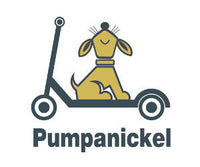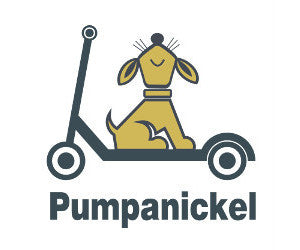
How Skateboard Decks Are Made
Knocking on Wood
Next time you need to knock on wood or touch wood, reach out for the skateboard deck. This is typically made from maple trees which grow in the north-central region of North America around the Great Lakes. Colder climates are typically considered to produce denser wood. Trees in colder areas have slower growth rates and thus, they have more rings per given length of a cross section.

It is generally accepted that cold-weather maple produces tighter wood. The extra growth rings produce added strength, which translates into that mystical pop that skateboarders are always going on about. We often refer to this wood as “hard rock maple” or Canadian maple.
All about Veneers
The strength of a skateboard deck comes from crossing the veneers. Skateboard decks are essentially plywood, in that they are made from thin layers of wood that are glued together. Cheap plywood is typically a softwood, such as pine, and the plies are made from small pieces of wood that are epoxied together. Maple veneers could not be any more different from pine plywood.
Maple veneers start out as a single log which is kept at optimal humidity until it is sent to a saw mill for processing. There the bark is stripped, and the log is halved or quartered, depending on its size. This process is called bucking. The bucked logs are then heated to around 93oC to soften the fibres and make slicing easier and more effective. The heating is done with either a hot water bath, hot water spraying or steaming.
Once bucked, the logs are immediately sliced using a lathe. Skateboards utilise some of the thinnest veneers available, usually about 1/16 of an inch. The next step is drying. Skateboard veneers are usually dried to approximately 8% moisture because of the epoxy used in creating the deck. Other epoxies and uses require different moisture levels.

There are three different configurations of veneers used in each deck. First is the face veneer, which will be the top and bottom layers of the deck. These layers should be free of blemishes and knots, and they are always long-grain direction (vertical). Any blemished pieces can be used for another section of the deck. Next is the core veneer. It is also vertically sliced and long-grain in direction. However, these pieces often have blemishes and knots that would look unsightly if used for the face layers of the deck. Last are the cross-grain veneers. As the name implies, the cross-grain layers have the grain facing sideways. They are usually just cut sections of longer veneers that are then glued together. Decks are assembled so that their grains cross at each layer, which drastically increases their strength.
The veneers on a skateboard can come from the manufacturer as either their natural colour, or they may be stained any number of other colours. The staining is done under pressure in a pressure chamber, and the colour travels right through the entirety of the veneer. This process cannot be done either by hand or by soaking. The pressure is a necessary component of dying. The reason colour on the veneers must be forced through the whole thing is for the sake of a long-lasting effect. If a dye or stain were simply painted onto the veneer, the colour would easily scratch off. This is why a stained deck keeps its colour long after the screen printed graphics have worn away from use.
 Stick ‘em together
Stick ‘em together
The top and bottom sheets of veneer get sanded on one side. The other side, as well as both sides of the remaining sheets, get a coating of a special glue. The adhesive is a special formulation that can withstand the repeated shocks of the board smacking the pavement and obstacles without cracking or separating.
Most manufacturers use non-toxic, water-based adhesives called polyvinyl assembly adhesive (PVA). The PVA requires a catalyst to speed up the drying time. Once the adhesives are applied, the veneers are layered, and several decks worth of layers are placed together in a mould for pressing.
Shaping into Decks.
Decks must be placed in a mould to form them into the shape of the board. This is where the deck will get its concave and the upturn on the tail and the nose. The roundness in the nose and tail get cut out after the drying process is complete. Hot presses are the typical method of construction in the skateboard industry. The press applies more than 40 tons of pressure to the decks and holds them there for several hours (more for a cold press, less for a hot press). The glue must then dry completely before sawing.

The truck holes are drilled while the stack of decks remains unseparated. The whole stack is then sawn in the desired shape. Once this step is done the decks can be separated, before being given a final sanding. The decks can then move on to the final step: applying graphics.
Applying graphics
Skateboard graphics are applied using a process called heat transfer. Each graphic is ready made on a sheet of plastic. The plastic sheet is affixed to the bottom of the deck, and the pair are run through a machine that simultaneously applies heat and pressure. The high heat melts the ink on the plastic sheet, applying it permanently to the bottom of the deck.

Conclusion
That’s how a skateboard deck is made! The deck you ride went through a process nearly identical to the one described above, regardless of who made it or where you bought it. There are other materials used today, especially in longboard construction, but the processes are still pretty much the same. Skateboard manufacturing has become a high tech affair over the years, progressing at nearly the speed of skateboarding itself. So respect that deck. It went through a lot so that you can skate.
Check out the full range of Yocaher skateboards here.
This post is edited from an original article by Yocaher. For more information, visit https://www.yocaher.com

